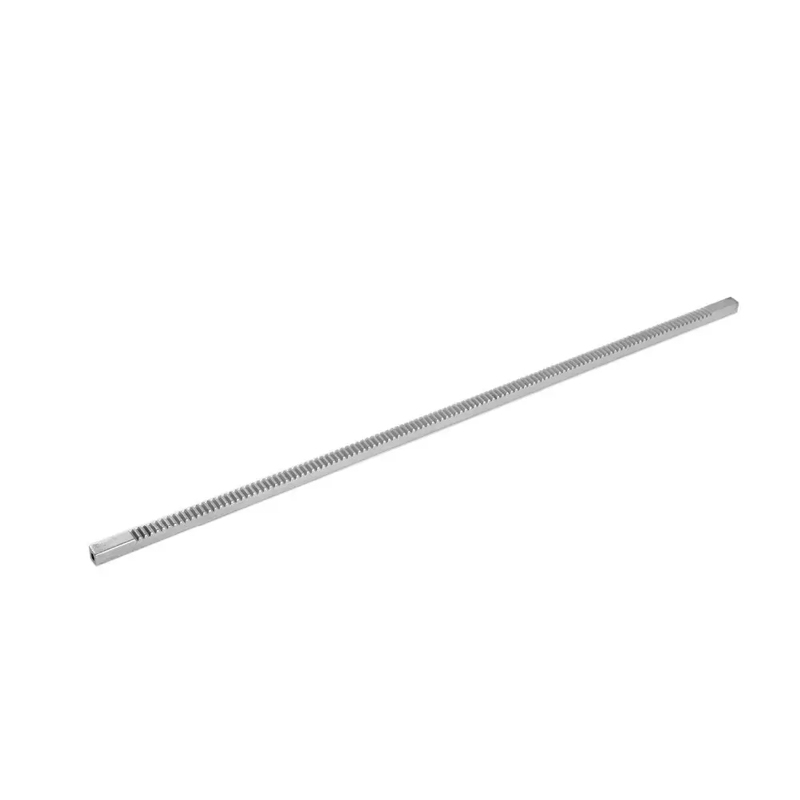No. 200 Gaoxin RD, Shanghua St, Lanxi, Zhejiang, P. R China
The Surface Heat Treatment Rack Pinion Gear is a precision-engineered ...
See DetailsThe tempering of straight gear racks involves controlled heat treatment after quenching to adjust hardness and toughness. Straight gear racks are commonly used in linear motion systems where they transmit mechanical power or motion between a rotating pinion and a straight-line component. These racks are often made of medium- to high-carbon steel, which, after hardening, can become brittle. Tempering reduces brittleness while preserving sufficient hardness to resist wear, making it ideal for repetitive load-bearing operations.

The precise tempering temperature depends on the desired balance between hardness and ductility. For example, tempering a gear rack at around 400°C can produce a component that is hard enough to resist surface wear while being tough enough to absorb shock loads. This treatment improves fatigue resistance, dimensional stability, and overall lifespan, making tempered straight gear racks well-suited for CNC machines, lifting mechanisms, and heavy-duty conveyors.
In contrast, galvanized garden gate hinges serve in static or low-movement applications, typically exposed to outdoor conditions. Galvanization is a process where steel components are coated with a layer of zinc to protect against corrosion. Hot-dip galvanizing is a common method, where hinges are immersed in molten zinc, forming a metallurgical bond that resists moisture, oxygen, and other corrosive agents.
Garden gate hinges require mechanical strength to support the weight of the gate, but their primary challenge is weather exposure. Galvanization ensures that the hinges retain structural integrity over time, even when exposed to rain, humidity, or varying temperatures. The zinc layer sacrifices itself through slow oxidation, thereby preventing rust from forming on the underlying steel.
By applying these material-specific treatments—tempering for dynamic precision components and galvanizing for static, weather-exposed elements—engineers can optimize both mechanical performance and long-term reliability. Each process demonstrates how tailored approaches to material science ensure functionality across diverse application environments.
The durability of a custom helical gear rack is determined by a combination of material selection, tooth geometry, surface treatment, and manufacturing precision. In applications where smooth, continuous linear motion is necessary—such as in automated machinery, robotics, or high-speed transport systems—helical gear racks are chosen for their efficient force distribution and quieter operation compared to straight racks.
The angled tooth profile of a custom helical gear rack ensures gradual engagement with the pinion, which reduces impact loads and wear. This geometry distributes stress more evenly along the tooth surface, enhancing operational smoothness and lifespan. However, it also introduces axial loads that must be accounted for in system design, particularly in high-speed or continuous-duty environments.
Material durability is a critical factor. Alloy steels such as 4140 or 4340 are often used for their high tensile strength and capacity for heat treatment. When these gear racks are custom manufactured, designers can specify induction-hardened teeth or case-hardening processes to further resist wear in high-cycle applications. Surface treatments such as black oxide or phosphate coating can also protect against corrosion and reduce friction.
Precision manufacturing, especially through CNC machining, contributes significantly to durability. Accurate tooth profiles reduce backlash and ensure consistent meshing, mechanical strain. Proper alignment with mating pinions and appropriate lubrication further extend the life of the gear rack.